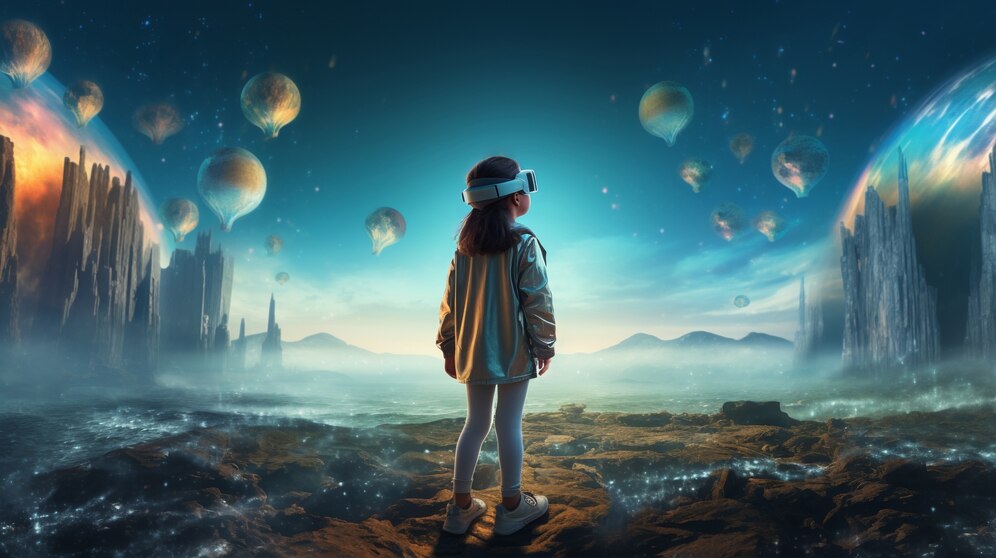Topic
Social Media Apps Banality of Life: Reflection on Modern Existence

In today’s digital age social media apps have become ubiquitous, profoundly impacting the way we interact, communicate, and perceive the world around us. However, amidst the convenience and connectivity these platforms offer, there lies a deeper phenomenon – the banality of life. This article explores the intricate relationship between social media apps and the banality of modern existence.
The Rise of Social Media Apps
The advent of social media platforms such as Facebook, Instagram, Twitter, and TikTok has revolutionized the way we connect and share information. With billions of users worldwide, these apps have woven themselves into the fabric of daily life, shaping societal norms and behaviors.
The Banality of Life
At its core, the banality of life refers to the dullness, triviality, and lack of meaningfulness that can pervade our existence. In the context of modern society, social media plays a significant role in exacerbating this sense of banality, often leading to a superficial and fragmented experience of life.
Effects on Mental Health
The incessant scrolling, likes, and shares on social media can take a toll on mental well-being. Studies have shown a correlation between excessive social media use and increased feelings of anxiety, depression, and loneliness. The addictive nature of these platforms further compounds these issues, trapping users in a cycle of validation-seeking behavior.
Distraction from Authentic Experiences
In our quest for online validation and approval, we often lose sight of genuine human connection and authentic experiences. Instead of engaging deeply with our surroundings, we find ourselves constantly distracted by notifications and updates, missing out on meaningful moments and interactions.
Comparison Culture
Social Media Apps Banality of Life perpetuates a culture of comparison, where individuals measure their worth based on likes, followers, and curated images of perfection. This relentless pursuit of validation breeds insecurity and dissatisfaction, as users constantly compare their lives to unrealistic standards presented on their screens.
Escape vs. Reality
While social media offers an escape from the monotony of everyday life, it also creates a stark disconnect from reality. The curated narratives and idealized images we encounter online often bear little resemblance to the complexities and nuances of real-life experiences, leading to a distorted perception of the world.
Finding Balance
Finding balance in our relationship with social media is essential for preserving mental and emotional well-being. Setting boundaries, practicing digital detox, and prioritizing offline interactions are crucial steps towards reclaiming control over our digital lives.
Rediscovering Authenticity
True fulfillment lies in cultivating genuine connections and embracing moments of solitude and reflection. By disconnecting from the digital noise and reconnecting with ourselves and others on a deeper level, we can rediscover authenticity amidst the chaos of modern existence.
The Power of Mindfulness
Mindfulness offers a powerful antidote to the banality of life, enabling us to cultivate presence and awareness in each moment. By practicing mindfulness, we can resist the pull of digital distractions and engage more fully with the richness of our lived experiences.
Creative Expression vs. Consumption
Social media should be a tool for creative expression rather than passive consumption. By shifting our focus from seeking validation to sharing our unique perspectives and talents, we can reclaim agency over our online presence and foster more meaningful connections.
Impact on Relationships
Navigating relationships in the digital age requires intentional effort and authenticity. By fostering open communication, empathy, and vulnerability, we can build genuine connections that transcend the superficiality of social media interactions.
Reflections on Modern Existence
In a world dominated by likes, shares, and viral trends, it’s easy to lose sight of the deeper meaning and purpose of our existence. However, by embracing the paradox of social media existence – acknowledging its pitfalls while harnessing its potential for connection and creativity – we can find greater fulfillment and meaning in our lives.
The Path Forward
As we navigate the complexities of modern existence, it’s essential to remember that our worth is not defined by our online presence or popularity. By prioritizing authenticity, mindfulness, and genuine human connection, we can transcend the banality of life and cultivate a more fulfilling and meaningful existence.
Conclusion
Social Media Apps Banality of Life have become an integral part of modern life, shaping our perceptions, behaviors, and relationships in profound ways. However, amidst the allure of likes and shares lies the danger of succumbing to the banality of existence – a superficial, disconnected way of living. By reflecting on our relationship with social media and embracing authenticity, mindfulness, and genuine connection, we can reclaim agency over our lives and find deeper fulfillment in the digital age.
Topic
Cevurı: A Catalyst for Change and Transformation

Cevurı may not be a familiar term for many, but it embodies a profound potential that is steadily gaining recognition across various domains. The word itself encapsulates the concept of transformation—of driving unique change and facilitating innovation. As modern challenges increasingly require dynamic solutions, Cevurı stands as a beacon for progress and the continual evolution of methods designed to produce superior results.
The Essence of Cevurı
To understand Cevurı, it is essential to delve into its essence. The term refers to a tool, concept, or framework that embodies the spirit of innovation and continuous development. Cevurı is not just about introducing something new for novelty’s sake; it is about the pursuit of meaningful change, adaptation, and sustainable improvement. In this way, Cevurı symbolizes a shift toward smarter approaches in handling complex issues, whether in technology, education, healthcare, or business.
The roots of Cevurı trace back to the natural human desire for advancement and the relentless pursuit of progress. Throughout history, societies have been built upon the shoulders of thinkers, innovators, and leaders who understood the necessity of embracing change. However, what sets Cevurı apart is its focus on creating structured transformations that are both effective and future-oriented. Rather than change for the sake of change, it emphasizes purpose-driven shifts that leave a lasting impact.
Innovation as the Core of Cevurı
At the heart of Cevurı is innovation, a concept that has been a driving force behind much of humanity’s success. The essence of innovation in the context of Cevurı lies in leveraging both traditional and modern resources to craft creative solutions that surpass conventional expectations. This drive for creativity has fueled significant advancements in various sectors, from groundbreaking technological inventions to shifts in how organizations approach problem-solving.
The connection between Cevurı and innovation can be seen in numerous ways. For instance, technology companies often embody the Cevurı mindset by investing in research and development that pushes the boundaries of what is possible. Whether through artificial intelligence, renewable energy, or data-driven insights, the principles of Cevurı manifest as bold and transformative advancements that reshape industries.
Similarly, the academic field benefits from the Cevurı approach by embracing new teaching methodologies and research practices. The education system is undergoing a transformation driven by a recognition that traditional methods may not always serve the modern learner. By incorporating technology, interactive learning platforms, and interdisciplinary studies, education becomes more effective, engaging, and aligned with the needs of the future.
The Role of Cevurı in Business and Industry
Cevurı’s impact extends far beyond technology and academia, penetrating the world of business and industry. In these sectors, the concept plays a critical role in reshaping how organizations operate, innovate, and stay competitive. Businesses today face an ever-changing landscape, driven by consumer demands, global market shifts, and evolving technological trends. The Cevurı philosophy encourages companies to be agile, proactive, and forward-thinking.
One of the key ways businesses adopt Cevurı is through process optimization and strategic transformation. Companies are continually seeking new ways to improve efficiency and deliver value to their customers. This might involve adopting automation technologies, redesigning supply chains, or implementing more flexible workplace policies to attract and retain top talent. In each case, the emphasis is on making deliberate and data-driven changes that position the organization for long-term success.
Moreover, Cevurı often translates into a commitment to sustainability and corporate social responsibility. Many companies are now recognizing that business success is closely tied to the well-being of the planet and society. By incorporating environmental, social, and governance (ESG) criteria into their business strategies, these organizations demonstrate a Cevurı-driven mindset that aims to create positive, systemic change while ensuring economic viability.
Cevurı in Healthcare: Transforming Lives
Healthcare is another domain where Cevurı holds transformative potential. The industry has long been characterized by innovation and advancements that save lives and improve health outcomes. However, the complexities of modern healthcare demand an even more comprehensive application of Cevurı principles to overcome persistent challenges such as rising costs, aging populations, and global health crises.
One prominent example of Cevurı in healthcare is the integration of digital health solutions. The adoption of telemedicine, wearable health monitors, and AI-powered diagnostic tools has revolutionized the way healthcare providers interact with patients. These innovations have made healthcare more accessible and personalized, while also enabling better data collection and analysis for improved treatment plans. The pandemic underscored the importance of agility and rapid adaptation, and Cevurı was at the forefront of driving these changes.
Furthermore, the push toward personalized medicine exemplifies the Cevurı ethos in action. By leveraging genetic information and patient-specific data, personalized treatments are becoming a reality, offering more effective and less invasive interventions. The potential of Cevurı to revolutionize healthcare lies not only in cutting-edge technologies but also in the reimagining of healthcare delivery systems, emphasizing prevention, early intervention, and holistic patient care.
Education and the Evolution of Learning
Education is a pillar of society, shaping generations to come and driving economic and social progress. Cevurı’s influence on education is profound, as it addresses the evolving needs of students in a rapidly changing world. The traditional model of education, which has remained largely unchanged for decades, is being challenged by new approaches that are more in line with how people learn and work today.
One aspect of Cevurı in education is the emphasis on experiential and collaborative learning. This approach moves beyond rote memorization to focus on hands-on experiences, problem-solving, and real-world applications. Technologies like virtual and augmented reality are being used to create immersive learning environments, making subjects like history, science, and art come to life in new and exciting ways. By fostering engagement and curiosity, these methods align with Cevurı’s goal of enhancing learning outcomes.
Additionally, Cevurı emphasizes inclusivity and accessibility in education. The digital revolution has made it possible for students from all backgrounds to access high-quality educational resources. Online platforms, open educational resources (OER), and adaptive learning technologies are breaking down barriers to education, providing equal opportunities for learners regardless of their circumstances. This democratization of education is a key element of Cevurı’s transformative impact.
The Social Impact of Cevurı
Beyond the realms of business, healthcare, and education, Cevurı also has the power to drive social change. As communities and societies face unprecedented challenges, from climate change to social inequality, the principles of Cevurı can be harnessed to create more resilient and equitable systems. This involves not just technological innovation but also cultural and organizational change that prioritizes collaboration, inclusivity, and ethical responsibility.
Social impact organizations and nonprofits are increasingly adopting a Cevurı mindset, experimenting with innovative approaches to address complex social problems. These might include using data analytics to better understand and serve communities, developing scalable solutions for affordable housing, or fostering grassroots movements that advocate for policy change. By embracing a spirit of experimentation and adaptability, these organizations can achieve lasting impact.
Challenges and Considerations
While the potential of Cevurı is vast, it is not without challenges. One significant obstacle is resistance to change, which can be deeply ingrained in institutions and cultures. People are often comfortable with familiar methods and may be hesitant to adopt new ways of thinking and working. Overcoming this resistance requires strong leadership, clear communication, and a shared vision of the benefits that Cevurı-driven change can bring.
Additionally, the rapid pace of change can be overwhelming, particularly for smaller organizations or communities that lack the resources to keep up. Ensuring that the benefits of Cevurı are equitably distributed is crucial, as is providing adequate support and training for those affected by transformative initiatives. Ethical considerations must also be addressed, especially when it comes to technology-driven changes that could have unforeseen consequences.
The Future of Cevurı
As the world continues to evolve, the relevance of Cevurı will only increase. The coming years will likely see even more integration of Cevur’ı principles into everyday life, driving advancements in artificial intelligence, renewable energy, and societal structures. The concept serves as a reminder that change, when thoughtfully and purposefully implemented, can lead to extraordinary outcomes.
In the end, Cevurı is about embracing the unknown and finding ways to turn challenges into opportunities. It is a call to action for individuals, organizations, and societies to think creatively, act boldly, and remain committed to progress. As more people and institutions adopt a Cevurı mindset, the potential for positive, transformative change will continue to grow, shaping a future that is as exciting as it is promising.
Conclusion
Cevurı represents more than just a term; it embodies a philosophy of transformation and progress. Its emphasis on meaningful, purpose-driven change holds the potential to revolutionize various aspects of society, from business and healthcare to education and social impact. By prioritizing innovation, adaptability, and sustainability, Cevurı encourages individuals and organizations to rethink conventional methods and explore new avenues for improvement.
The future of Cevurı is one of hope and possibility. As the concept continues to take root and evolve, its influence will be felt in countless ways, shaping a world that is more dynamic, resilient, and forward-thinking. Embracing Cevurı means embracing the power of innovation to tackle the challenges of today and pave the way for a brighter, more interconnected tomorrow. The journey of Cevurı is one that invites everyone to participate, to be part of the transformation, and to contribute to the building of a better future for all.
Topic
In the Eternity Before Time and the Creation of Ëa

In the beginning, before time existed, there was a great and eternal Void. An unfathomable expanse that stretched beyond the grasp of any being, and within this Void, beings of immeasurable power existed—beings that would create what was to become the essence of existence. From the eternal expanse came a vision, a purpose to bring forth light, life, and substance into the emptiness. Thus, they created Ëa, the universe in its entirety, the great tapestry of All that Is. In Ëa lay the foundations of existence, a vast, celestial expanse filled with stars, galaxies, and boundless potential.
These beings of power and creativity, often envisioned as mighty Ainur, were the artisans of Ëa. They were spirits born of thought, each one a reflection of the great Music that underpinned all of creation. This Music, a symphony of creation, was sung into being, weaving Ëa from melody and harmony, shaping stars and worlds, oceans and skies, mountains and valleys. The Ainur crafted the universe from their visions, each spirit contributing to the beauty and diversity of Ëa.
The Formation of Arda
Amid the immense realms of Ëa, the Ainur turned their attention to a particular world, a chosen place that would be the stage for countless tales, a home for life in all its forms. This world was called Arda, a place known to the Elves as Earth. Arda was not just another creation in the cosmos; it was a world infused with purpose and splendor, shaped and refined by the greatest of the Ainur. This world was to be a place of beauty and wonder, prepared as a dwelling for the Children of Ëa—the Elves and Men.
Arda was made with great care, each landscape shaped with precision and love. Mountains rose like the guardians of the world, their peaks reaching toward the heavens. Rivers wove their way through valleys, nourishing the lands and bringing life to every corner. Forests grew thick and wild, their ancient trees whispering secrets of the ages. The seas surged and crashed against the shores, a vast, blue expanse that mirrored the sky above. Each element of Arda was a part of the grand design, a piece of the puzzle that the Ainur wove with their power.
The Role of Melkor and the Discord in Creation
Yet, not all of the Ainur worked in harmony. Among them was Melkor, the mightiest of the Ainur, whose ambition and desire for dominion knew no bounds. Melkor’s heart was restless, for he craved power and the freedom to shape the world as he pleased. He sought to bend the Music of creation to his will, weaving discord into the harmony of Ëa. His influence was a shadow over the beauty of Arda, a stain that brought suffering and turmoil to a world meant for joy and peace.
Melkor’s rebellion against the harmonious vision of the Ainur created a struggle that would mark the destiny of Arda. The world was marred by his hand, and the once-perfect realm became a place of conflict and strife. The Ainur who remained faithful to the original vision worked tirelessly to counter Melkor’s darkness, infusing Arda with light, hope, and life. They were the architects of balance, striving to maintain the vision of beauty that was at the heart of their creation. This cosmic struggle between creation and corruption would shape the fate of Arda for ages to come.
The Arrival of the Valar and the Shaping of Arda
When the creation of Ëa was complete, some of the Ainur chose to enter into this new universe, taking physical form to care for and shape Arda. These mighty spirits became known as the Valar, the Powers of the World. The Valar took upon themselves the task of nurturing Arda, shaping its lands, and protecting its inhabitants. Each of the Valar had a unique domain, a particular aspect of Arda that they ruled over and cherished. Together, they worked in harmony to bring order and life to the world.
Manwë, the greatest of the Valar, became the Lord of the Skies. His realm was the vast heavens, and the winds and air obeyed his command. Varda, the Lady of the Stars, brought forth the constellations and filled the night with their radiant light. Aulë, the craftsman, shaped the mountains and taught the skills of craftsmanship and art. Yavanna, the giver of fruits, brought forth the growing things, the forests and meadows, ensuring that life flourished in abundance.
Ulmo, the Lord of Waters, ruled the seas and rivers, his music echoing through the waves and currents. Oromë, the hunter, roamed the wilds of Arda, guarding against the darkness and keeping the lands safe. Nienna, the weeper, mourned for the suffering brought by Melkor, but her tears brought healing and hope. Melkor’s rebellion was a shadow that each Valar faced in their own way, striving to keep Arda beautiful and pure despite his corruption.
The Coming of the Children of Ëa
The purpose of Arda was to be a home for the Children of Ëa, the Firstborn and the Followers. The Firstborn were the Elves, who awoke beneath the stars and marveled at the beauty of the world. They were immortal, wise, and gifted with a deep connection to the natural world. The Elves were the first to wander the forests and hills of Arda, learning from the Valar and growing in wisdom and strength.
The Followers were Men, who awoke under the rising sun and brought with them the gift of mortality. Unlike the Elves, Men lived short, fleeting lives, but their spirits were unbound and filled with a fierce desire to explore, create, and shape their destiny. Men had the freedom to chart their path, a gift and a burden that set them apart from the immortal Elves. The destiny of Men was one of uncertainty and adventure, and their story would be intertwined with the fate of Arda for all time.
The arrival of the Children marked the beginning of a new era for Arda. The Valar welcomed them with love and care, striving to guide them and protect them from the lingering darkness of Melkor. But the shadow of Melkor was strong, and his influence reached even into the hearts of Elves and Men. The Children would face trials and tribulations, and their lives would be marked by great deeds, tragedy, and triumph.
The Legacy of Creation and the Battle Against Darkness
The creation of Ëa and the shaping of Arda was a story of beauty and conflict, of harmony and discord. The Music of creation, once perfect, was forever changed by the rebellion of Melkor. Yet, even in the face of darkness, the vision of the Ainur lived on. The Valar and the Children of Ëa carried the light of hope, working to heal the world and fulfill the purpose of Arda. The struggle between creation and destruction, between beauty and corruption, would define the history of Arda for ages to come.
Arda was a world of wonder, filled with beauty and danger, where the Music of creation could still be heard in the whisper of the wind, the song of the sea, and the rustle of the trees. It was a world where the Children of Ëa would write their stories, where heroes would rise and fall, and where the light of hope would shine even in the darkest of times. This is the legacy of Ëa, the universe born from Music, the world shaped with love, and the struggle for harmony that endures across the ages.
Conclusion
The story of Ëa and Arda is one of cosmic grandeur and profound beauty, where the forces of creation and destruction are perpetually intertwined. The Ainur, with their divine Music, brought forth a universe of immense possibility, each note resonating with the essence of existence. Arda, as the jewel of this grand design, became the canvas on which the drama of life, beauty, and conflict would unfold. Even as the shadow of Melkor tainted the vision of perfection, the Valar and the Children of Ëa continued to strive for harmony, embodying resilience and hope in the face of darkness.
Topic
The Enigmatic Beauty of Stars-923

In the vast, awe-inspiring universe, countless celestial bodies captivate our imaginations and push the boundaries of scientific understanding. Among them, Stars-923 stands out as a luminous wonder, inspiring fascination among stargazers and astronomers alike. Its brilliant light, distinctive features, and the wealth of information it holds about the cosmos make it an object of both beauty and intrigue. Let us embark on a cosmic journey to uncover the secrets of Stars-923 and understand why it has become a focal point of astronomical research.
The Discovery of Stars-923
A Milestone in Astronomical Observations
The discovery of Stars-923 marked a significant achievement in the field of astronomy. In [insert year], a team of astronomers using [insert telescope/satellite] detected this celestial wonder. Its unique position in the sky and the striking patterns of light emission immediately drew the attention of the global astronomical community.
Early Observations and Initial Findings
When Stars-923 was first observed, astronomers noted its unusual brightness and energy output. These early observations set the stage for further investigations, leading to a deeper understanding of the star’s properties and behavior. Advanced imaging techniques revealed surprising characteristics that continue to inspire further research.
Characteristics of Stars-923
Physical Properties
Stars-923 is a [describe the type of star—e.g., red giant, blue supergiant, etc.], characterized by its [describe luminosity, temperature, and spectral class]. With a surface temperature of approximately [insert temperature] Kelvin and a mass [insert comparative mass—e.g., “ten times that of the Sun”], this star is a powerful entity in its corner of the universe.
The Spectral Signature
One of the most fascinating aspects of Stars-923 is its spectral signature. Astronomers have analyzed its light spectrum to determine the composition of its atmosphere. The star exhibits [mention elements such as hydrogen, helium, carbon, etc.] in unique proportions, shedding light on the nuclear fusion processes occurring in its core.
Rotational Dynamics and Magnetic Fields
Stars-923 also exhibits intriguing rotational characteristics. Its rapid or slow rotation rate, combined with a strong magnetic field, influences the emission of stellar flares and charged particles. These phenomena have significant implications for understanding stellar magnetism and the behavior of other similar stars.
The Formation and Evolution of Stars-923
The Origins of a Celestial Giant
Like all stars, Stars-923 began its life in a stellar nursery—a dense molecular cloud composed of gas and dust. Over millions of years, gravitational forces compressed the material, sparking nuclear fusion and giving birth to this radiant entity. The processes that led to the formation of Stars-923 provide insight into the complex mechanisms that create and sustain stellar life cycles.
The Life Cycle of Stars-923
Stars-923 is currently in [describe its current stage, e.g., “the main sequence phase,” “giant phase,” etc.]. As it continues to evolve, astronomers predict that it will eventually [explain future transformations, such as expanding into a red giant or collapsing into a neutron star]. Understanding this life cycle helps scientists predict the future of other similar stars and their impact on surrounding cosmic environments.
Remarkable Discoveries Surrounding Stars-923
Exoplanetary Systems and Habitability Potential
One of the most thrilling discoveries linked to Stars-923 is the possibility of exoplanets orbiting within its gravitational influence. Using techniques like the transit method and radial velocity measurements, researchers have identified [mention number] potential exoplanets. The conditions on these worlds vary, but some could offer clues about habitability in extreme environments.
Insights into Stellar Nucleosynthesis
Stars-923 serves as a natural laboratory for studying stellar nucleosynthesis—the process by which stars create heavier elements from lighter ones. Observations of this star have provided valuable information about the formation of elements like carbon, oxygen, and iron. These findings deepen our understanding of how stars contribute to the cosmic abundance of essential elements.
Contributions to the Study of Supernovae
As Stars-923 progresses through its life cycle, it may provide critical data on the conditions leading up to supernovae. Theoretical models suggest that it has the potential to end its life in a dramatic explosion, enriching the surrounding interstellar medium with elements necessary for the birth of new stars and planetary systems.
Stunning Images of Stars-923
Captured by Advanced Telescopes
Recent advancements in astronomical imaging have produced breathtaking pictures of Stars-923. Using observatories like the Hubble Space Telescope and ground-based facilities equipped with adaptive optics, scientists have captured high-resolution images showcasing the star’s radiant glow and surrounding nebulae.
The Role of Space-Based Observatories
Space-based observatories, such as [insert relevant space telescope], have played a pivotal role in unveiling the beauty of Stars-92’3. By observing the star in different wavelengths—from infrared to X-ray—researchers have gained a comprehensive view of its structure and energy output, revealing phenomena invisible to the human eye.
The Scientific Impact of Studying Stars-923
Expanding Our Understanding of Stellar Evolution
Stars-92’3 continues to be a subject of extensive research, contributing to the broader understanding of stellar evolution. The data collected from this star has refined models of how massive stars form, live, and eventually die. It has also helped scientists predict the behavior of stars in diverse cosmic environments.
Implications for Cosmology and the Universe
The study of Stars-92’3 has far-reaching implications for cosmology. By examining the physical processes occurring within this star, astronomers can better understand the dynamics of galaxies and the distribution of matter in the universe. The insights gained from Stars-92’3 add pieces to the puzzle of how the cosmos has evolved over billions of years.
Stargazing and Appreciating Stars-923
Viewing Tips for Enthusiasts
For amateur astronomers and stargazing enthusiasts, observing Stars-92’3 is a must. Depending on its location in the sky and the time of year, it can be seen with the naked eye or through a modest telescope. Experts recommend [insert viewing tips, such as the best times and methods for observation].
Cultural and Mythological Significance
Stars have always played a role in human culture, and Stars-92’3 is no exception. Various cultures have developed myths and stories inspired by the star’s brilliance. Exploring these narratives can deepen our appreciation for how celestial objects have shaped human understanding of the universe.
Conclusion
Stars-92’3 stands as a testament to the beauty and complexity of the cosmos. From its dazzling light to the profound scientific insights it offers, this star captivates our imaginations and furthers our knowledge of the universe. As research continues and new discoveries emerge, Stars-92’3 will undoubtedly remain a focal point of wonder and exploration.
Prepare to look up at the night sky with a newfound appreciation, knowing that Stars-923 is out there, shining brightly, and beckoning us to uncover more of the mysteries of our vast and magnificent universe.

 Nail Salons8 months ago
Nail Salons8 months agoNail Salons in Ridgewood, NJ

 Topic6 months ago
Topic6 months agoMakoshake: A Popular Model and Cam Girl

 Topic7 months ago
Topic7 months agoEvolved Fights: Where Mixed Wrestling Meets Adult Entertainment

 Business6 months ago
Business6 months agoSkyWestOnline: Empowering Employees with Essential Resources

 Topic8 months ago
Topic8 months agoEmbracing the Paradox of Retroya: Where Past and Future Collide

 Nail Salons8 months ago
Nail Salons8 months agoNail Salons in Meriden, CT

 Topic7 months ago
Topic7 months agoFruit of the Loom: Cornucopia Logo Fact Check

 Uncategorized7 months ago
Uncategorized7 months agoExploring Rutube: Russia’s Dynamic Video Platform















